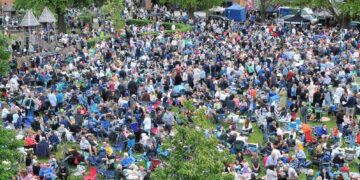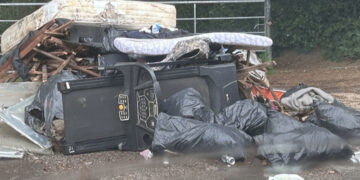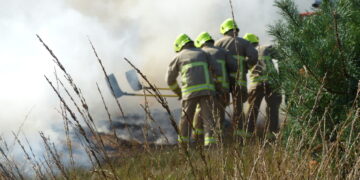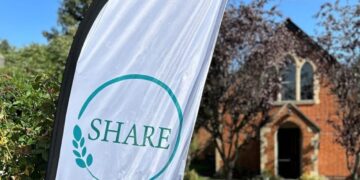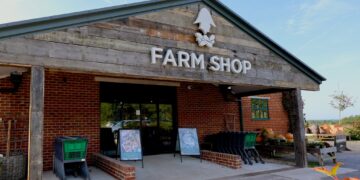For the Wargrave Local History Society’s October meeting, Dr David Lewis gave an enlightening presentation on the Medieval Hospital of St Peter and the hermitage of St Leonard, both at Windsor.
The latter was important enough to be mentioned in the first book printed by Caxton, in 1485.
David began by explaining some of the problems in researching that era.
Few documents survive, and they are written in shorthand medieval Latin, and the letters had different shapes to those we use now, whilst a mark indicated a missing word in the text, so reading the 3000 or so of these was not a simple task.
The term ‘hospital’ came from the Latin word hospes – meaning to host, from which comes the French hospi(t)ium (and hotel or hospitality), and they were sometimes known as Leper or Lazar (from the Biblical Lazarus) houses.
This did not mean that the people there suffered from leprosy, but it was a generic term for skin diseases.
They were a common feature of many towns – Norwich, for example, having seven of them. There was a standard form and location for them – a large hall with an adjoining chapel, situated in gardens on the boundary, so as to surround the town with prayer, alongside a main road where donors might pass.
In the case of Windsor, it was by the then main road to Reading, where there was the similar hospital of St Mary Magdalene, before it passed through into Windsor Forest.
The purpose of these hospitals was to care for the old, infirm or sick, and they were run on quasi monastic lines, catering for people without family support, but not necessarily mean they were poor.
There was a limited number of places – typically 12 – and a ceremony of purification, both spiritual and physical – the latter using an open bath called a stew – when the person would agree to the conditions and rules of the order running the hospital. An important task was growing medicinal herbs and plants.
Medical care then was based on the humoral theory. People were thought to catch illness through one of several causes – the miasmas of foul air, something they saw, or bad food. In much the same way as the elements or earth, air, dry and fire and water had to be kept in balance in the natural world, it was thought necessary to balance the blood, phlegm, yellow bile and black bile, corresponding to heat, wet, cold and dry.
The hospital continued in use until the 15th century, and its lands were then granted to Eton College by Henry VI in as part of the foundation endowment.
The chapel remained in use in 1530 as a chapel of ease, but eight years later the chapel was closed and the site became Spittal Chapel Farm, with some used for housing in the late 19th century.
Sadly, when 21st century redevelopment was to take place, the opportunity for a proper archaeological survey of the site was lost as the developer wanted to get on with their building project.
The area, however, is still called Spital, and the former Spital Road linking it to the town centre is now called St Leonard’s Road.
More details of the Society can be found at www.wargravehistory.org.uk – or email [email protected] to confirm meeting details.
PETER DELANEY




















